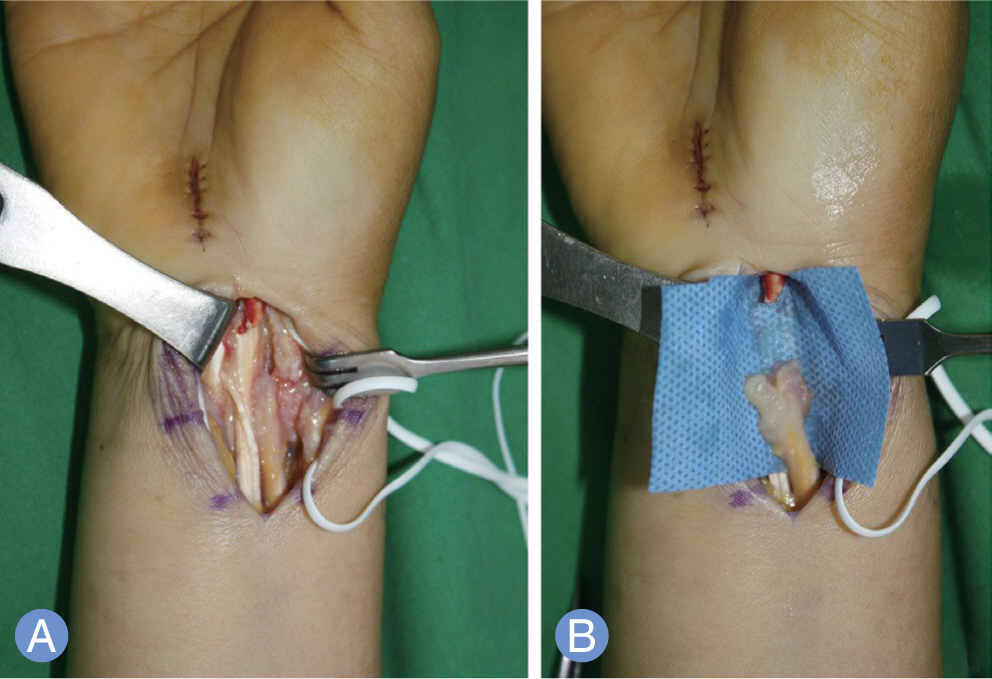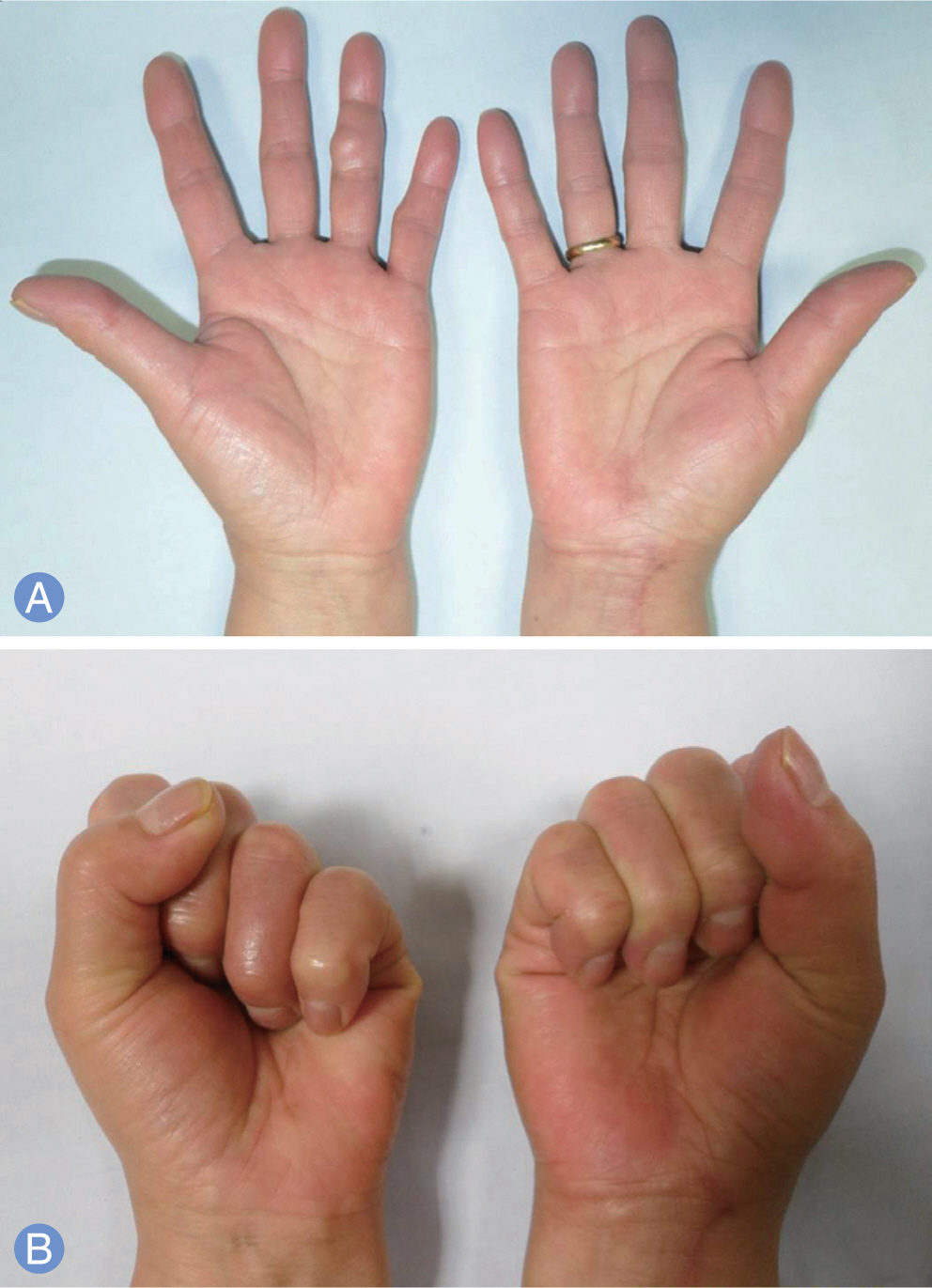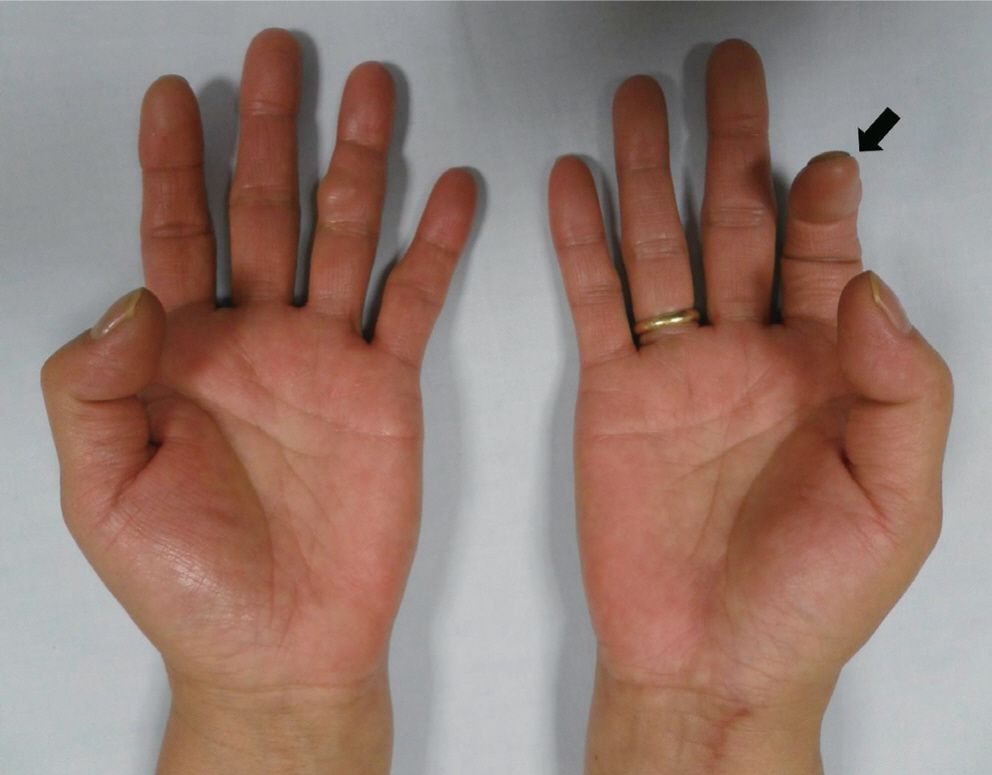J Korean Soc Surg Hand.
2016 Jun;21(2):84-88. 10.12790/jkssh.2016.21.2.84.
Flexor Pollicis Longus Reconstruction in Patient with the Linburg-Comstock Syndrome
- Affiliations
-
- 1Department of Orthopaedic Surgery, Prime Hospital, Busan, Korea.
- 2Department of Orthopaedic Surgery, Haeundae Paik Hospital, Inje University College of Medicine, Busan, Korea. oldeca5@naver.com
- KMID: 2328392
- DOI: http://doi.org/10.12790/jkssh.2016.21.2.84
Abstract
- Linburg-Comstock phenomenon is defined simultaneous flexion of thumb and other fingers. The coupling of the flexor pollicis longus and flexor digitorum profundus tendons is the main pathognomonic feature of this lesion. Typically, pain is noted at the distal level of the forearm at the site of the abnormal connection. We describe a case of flexor pollicis longus tendon rupture who undergoes a carpal tunnel release, and report the Linburg-Comstock syndrome after the flexor tendon reconstruction.
Keyword
Figure
Reference
-
1. Linburg RM, Comstock BE. Anomalous tendon slips from the flexor pollicis longus to the flexor digitorum profundus. J Hand Surg Am. 1979; 4:79–83.2. Miller G, Peck F, Brain A, Watson S. Musculotendinous anomalies in musician and nonmusician hands. Plast Reconstr Surg. 2003; 112:1815–22.
Article3. Badhe S, Lynch J, Thorpe SK, Bainbridge LC. Operative treatment of Linburg-Comstock syndrome. J Bone Joint Surg Br. 2010; 92:1278–81.
Article4. Lin B, Sreedharan S, Chin AY. Linburg-Comstock phenomenon following forearm laceration. Hand Surg. 2012; 17:221–4.
Article5. Boeckstyns ME, Sorensen AI. Does endoscopic carpal tunnel release have a higher rate of complications than open carpal tunnel release? An analysis of published series. J Hand Surg Br. 1999; 24:9–15.6. Spar I. Flexor tendon ruptures in the rheumatoid hand: bilateral flexor pollicis longus rupture. Clin Orthop Relat Res. 1977; (127):186–8.7. Christodoulou L, Yang XB, Chamberlain ST. Rupture of flexor pollicis longus after carpal tunnel decompression. Injury. 2000; 31:744–5.
Article8. Hamitouche K, Roux JL, Baeten Y, Allieu Y. Linburg-Comstock syndrome: epidemiologic and anatomic study, clinical applications. Chir Main. 2000; 19:109–15.9. Ortak T, Uraloglu M, Orbay H, Koc MN, Sensoz O. Linburg-Comstock anomaly: seems to be harmless but may be fatal. Plast Reconstr Surg. 2007; 119:1976–7.
Article10. Barabas AG. Flexor pollicis longus tendon repair in patients with Linburg-Comstock anomaly. J Hand Surg Eur Vol. 2013; 38:203–4.
Article11. Kalappa S, Shankar R, Kadadi BK, Rajappa GC. Linburg-Comstock anomaly of the flexor tendons of hand. ANZ J Surg. 2014. Oct 7 [Epub]. http://dx.doi.org/10.1111/ans.12881.
Article
- Full Text Links
- Actions
-
Cited
- CITED
-
- Close
- Share
- Similar articles
-
- Linburg-Comstock syndrome: a case report and review of the literature
- Flexor Pollicis Longus Tendon Rupture due to Scaphoid Nonunion
- Pathologic Rupture of Flexor Pollicis Longus Tendon Secondaryto Kienbock's Disease: A Case Report
- Acute Rupture of Flexor Tendons as a Complication of Distal Radius Fracture
- Multiple Flexor Tendon Injuries after Volar Plate Fixation for Distal Radius Fracture: Two Cases Report




